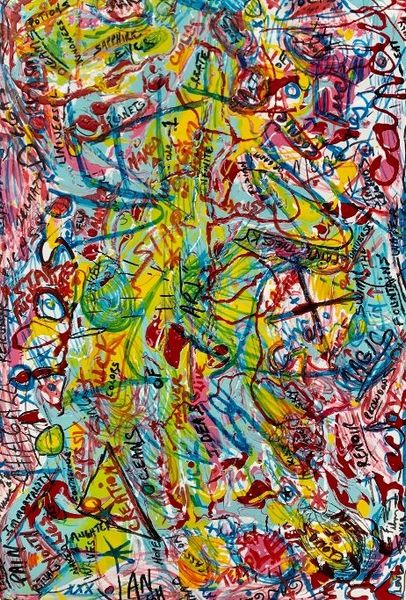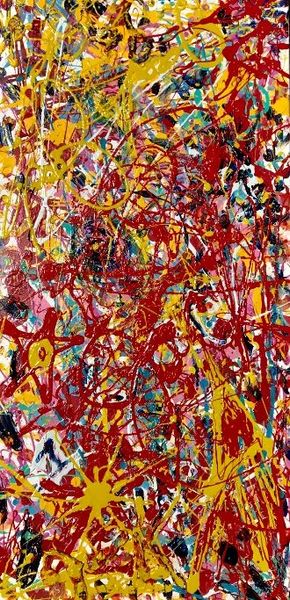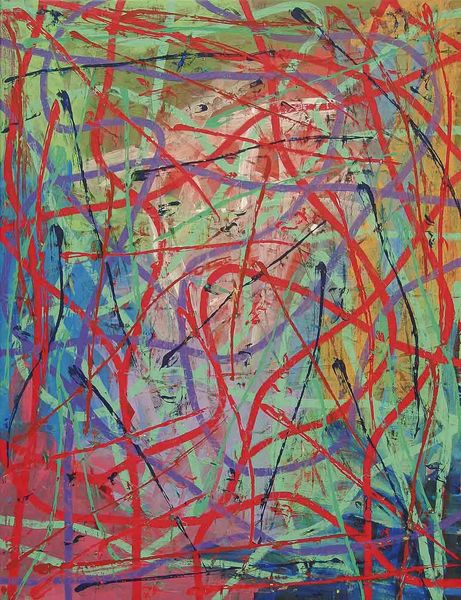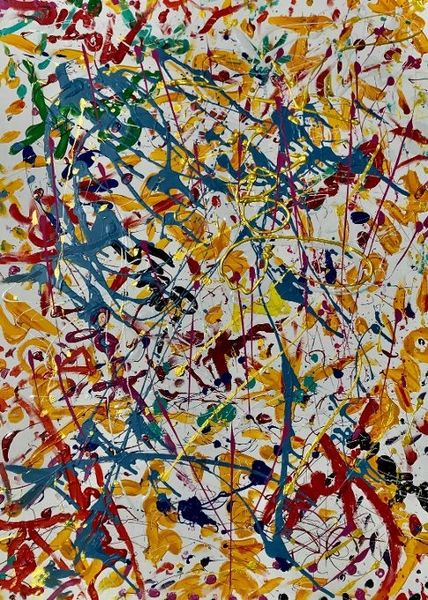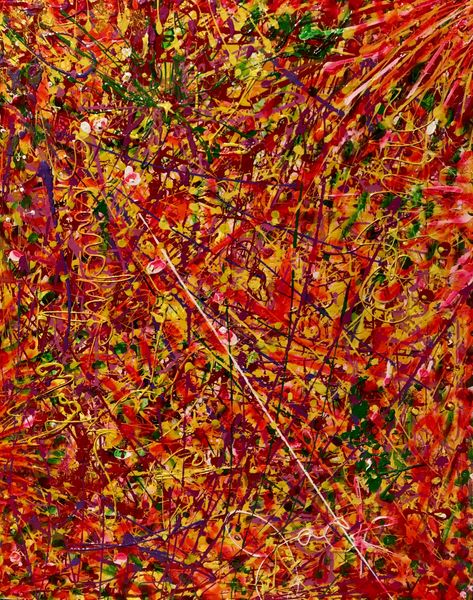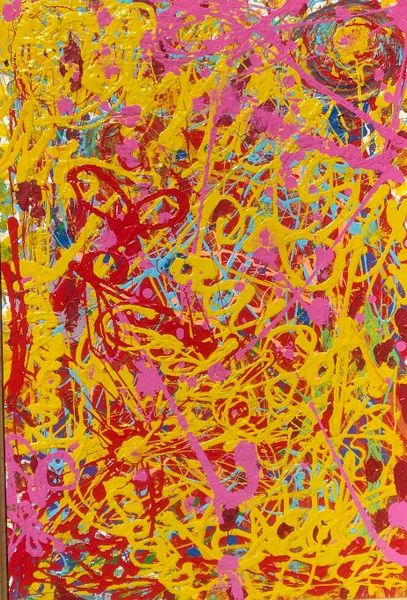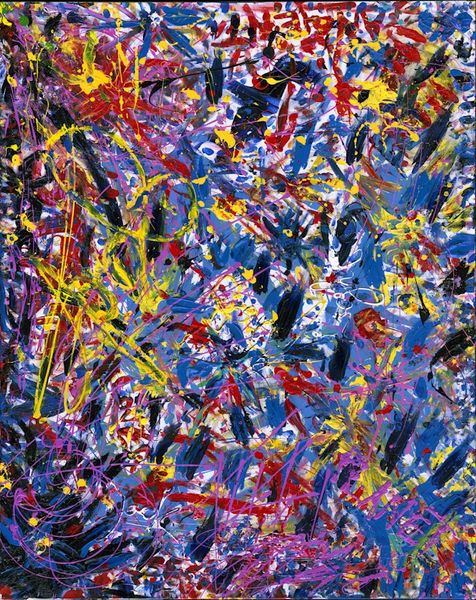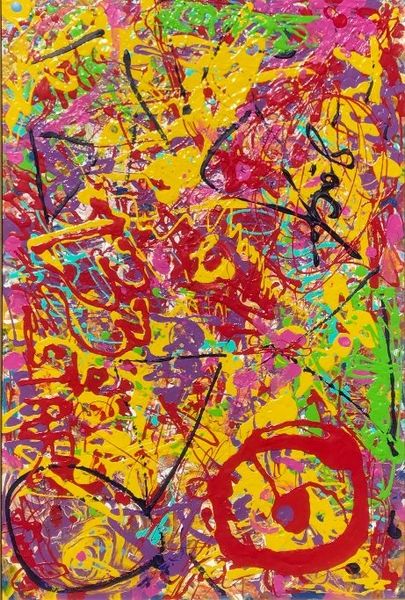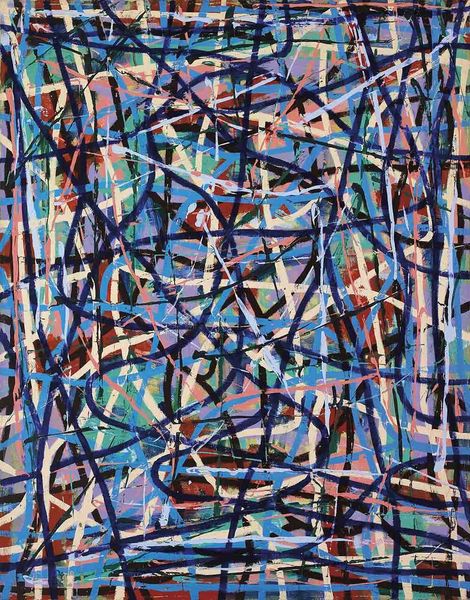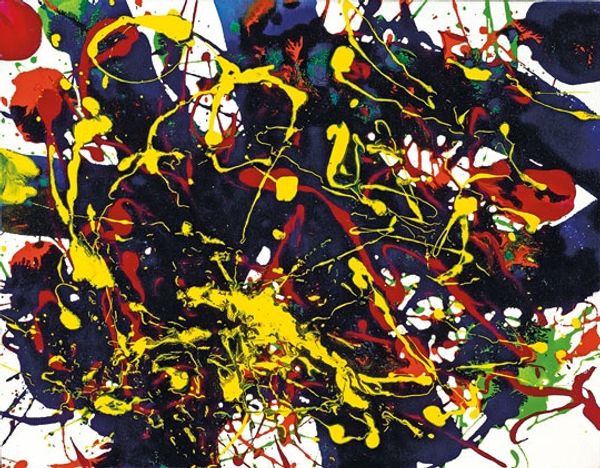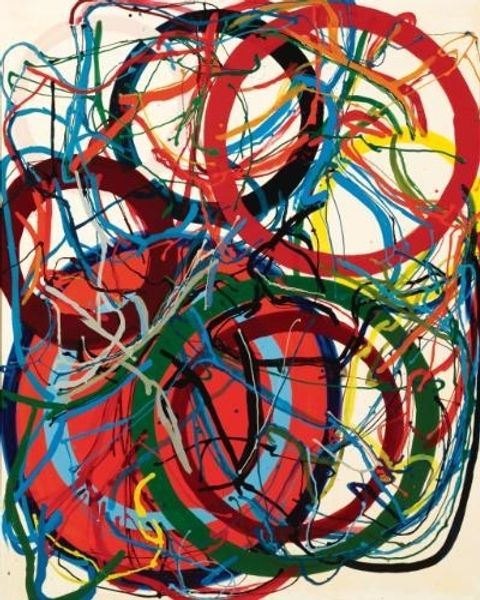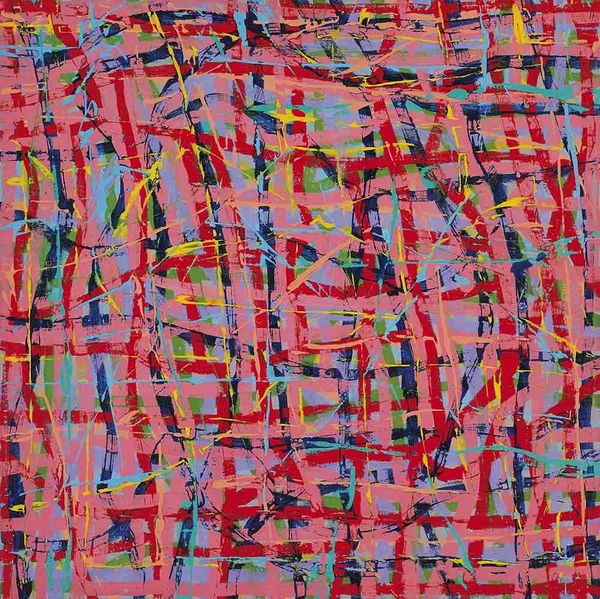
Dimensions: 48.01 x 35.99 cm
Copyright: Jack Armstrong,Fair Use
Curator: Well, that’s certainly… vibrant. Like a kaleidoscope exploded. I find myself wanting to simultaneously look closer and step back. Editor: That's a visceral response I anticipated. The piece before us is titled “Child Magic,” completed by Jack Armstrong in 2003. The work combines oil and acrylic paint, representative of his action-painting style. It's held in a private collection. Curator: "Child Magic"... That title, alongside the chaotic energy of the composition, reads as incredibly fraught to me. The wild, almost violent splatters feel like a deliberate disruption, maybe a refusal to adhere to societal expectations imposed from childhood, perhaps addressing performative magic within constructs such as class, religion, or race? Editor: I appreciate that you draw out the sociopolitical reading within the “chaos.” Zooming out, we must recognize how Abstract Expressionism, with artists like Pollock or de Kooning, initially thrived through a specific context during the Cold War— receiving covert backing as a symbol of American individualism and freedom in stark contrast to Soviet socialist realism. It's critical to recall that Armstrong, similarly using dynamic brushstrokes and the physical properties of paint, positions himself relative to that legacy, especially considering his later association with the Neo-Pop movement. Curator: Yes, it's essential to recognize art history. And still, looking at this painting, I am struck with how relevant the aesthetic decisions remain! Note how the colors interact— that fierce red over playful pink and sunny yellow. This isn’t mere color-blocking. Armstrong layers hues, and drips acrylics. You can sense an attempt to evoke and shatter power structures. Are those scribbles deliberate political manifestos barely legible beneath the frenzy of marks? Editor: Intriguing idea! Now, to consider “Child Magic” today, especially outside of formal institutional exhibition, one recognizes both its echoes of past aesthetic-political moments, but also perhaps how its status—existing in a private collection– limits the potentiality of future artistic engagement, doesn't it? What conversations could arise were such works situated beside others in the public realm? Curator: That reflection definitely gives us plenty to chew on moving forward! Editor: Absolutely. The ongoing dance between past and present, public and private – that's where the true magic resides.
Comments
No comments
Be the first to comment and join the conversation on the ultimate creative platform.
